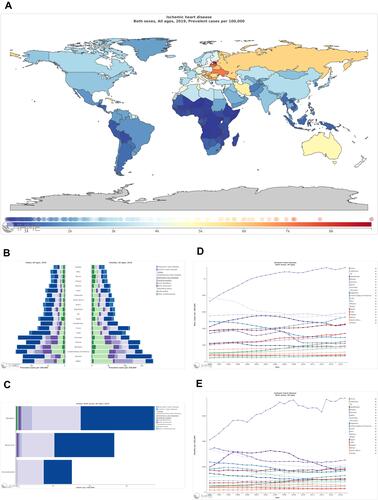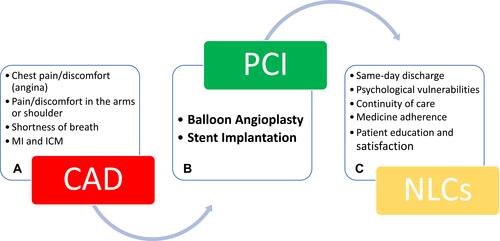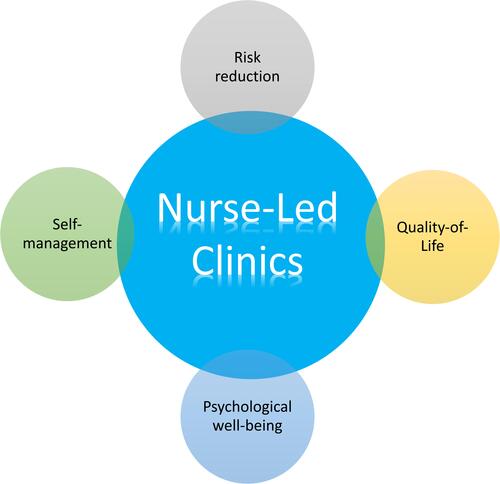Figures & data
Figure 1 Current epidemiological data on ischemic heart disease (IHD) from the Global Burden of Disease (GBD). (A) Global prevalence of ischemic heart disease (colors indicate prevalence rates per 100,000 population in 2019). (B) Prevalence of IHD among cardiovascular diseases in males and females in various countries. (C) Association of risk factors, including metabolic, behavioral, and environmental, and IHD. (D) Incidence trend from 1990 to 2018 according to countries. (E) Global mortality trends.

Figure 2 Nursing role in post-PCI management. (A) Coronary artery disease is manifested by pain or discomfort in chest (angina) and/or in the arms and shoulders with shortness of breath. (B) Percutaneous coronary intervention (PCI) is undertaken in the form of balloon angioplasty or stent implantation to relieve symptoms. (C) Post-PCI management has revealed several problems that requires enhanced nursing role.

Figure 3 Nursing-led clinics has shown improvement in three main dimensions such as, risk reduction, self-management, psychological improvement, and quality of life.

